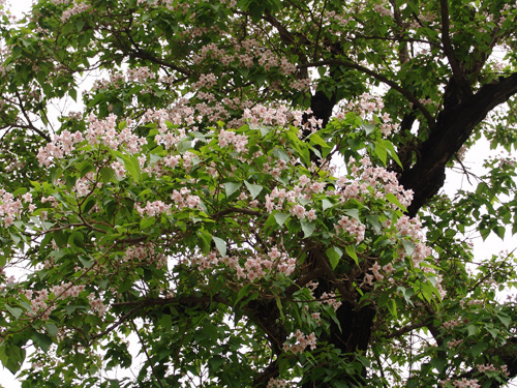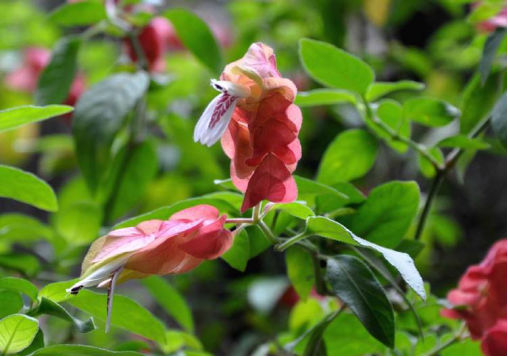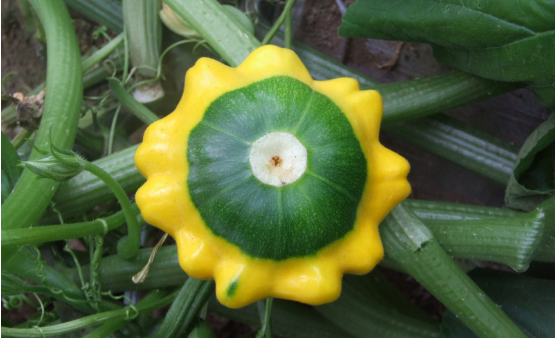Propagation methods of Catalpa chinensis
Sowing method, root burying method, cutting method and grafting method, while the most commonly used are root burying method and grafting method. If you are interested in the breeding methods of catalpa, you can take a look at the detailed introduction of the breeding methods of catalpa on this site.

The culture method of Catalpa chinensis 1. Basic knowledge of Catalpa chinensis Culture
Growing soil: deep, fertile, moist soil.
Humidity requirements: humidity should be kept between 68-79%.
Temperature requirements: annual average temperature of 10-15 ℃ environment.
Lighting requirements: plenty of sunlight.
two。 Watering
Catalpa trees have strict requirements on water quantity, which must be paid attention to in daily maintenance. For seedlings planted in spring, the first three water should be watered first, and then twice in May, June, September and October; if it is not dry in July and August, it can not be watered; in December, it should be watered thoroughly. In the early spring of the second year, the green water should be poured back in time, twice from April to October, and fully watered at the beginning of December. In the third year, it was watered according to the method of the second year. In the fourth year, in addition to watering the green water in early spring and the anti-freezing water in early December, there is no need for watering. It is entirely possible to rely on natural precipitation for growth, and only a small amount of watering is carried out when the weather is too dry.
3. Fertilizer application
In addition to applying sufficient base fertilizer at the beginning of planting, fertilization should be carried out around December of each year, some urea should be applied in early May, and some phosphorus and potassium fertilizer should be applied in late July.
4. Pruning
Catalpa has a strong sprouting power, and the trunk often produces new buds during the growing period. in order to avoid consuming too much nutrients, it should be pruned and removed in time. Usually, the drooping branches, cross branches, over-dense branches, disease and insect branches, dry and withered branches of Catalpa should be pruned.
If you do a good job of the above four points, Juglans mandshurica will be full of vitality and the fragrance of flowers will be overflowing. So, how do catalpa trees grow so luxuriantly under meticulous farming? The editor will tell you something about it.
Propagation methods of Catalpa chinensis
Sowing and Propagation of Catalpa
The first important thing for sowing and reproduction is to collect seeds from the catalpa trees that are more than 20 years old, then dry them and store them. The next step is to soak the seeds, soak them in about 30 ℃ of warm water for 4 hours before sowing, then dry them, then mix the seeds with wet sand and wait for them to sprout. In the meantime, it is necessary to sprinkle water regularly and turn it over, so that the internal and external humidity is uniform, and the seeds can be sown after opening.
Grafting Propagation of Catalpa chinensis
The grafting of catalpa can be carried out in winter or spring, and the bud grafting can be carried out in spring or late autumn. In winter, it can be stored in wet sand after indoor grafting, and then planted in early spring. It is better to be grafted before and after the Qingming Festival, and the survival rate of sealing soil is higher. In addition, split grafting can be carried out, that is, the scions and rootstocks are prepared, and the cambium is tied up with hemp rope and plastic rope, and sealed with wet soil. It can sprout in about 10 days.
Root-burying Propagation of Catalpa
The root-burying propagation of catalpa can be selected in late March. 1-2 cm root strips are selected on the well-growing catalpa tree, with a length of 12-20 cm. The incision should be smooth, it should be obliquely buried in the soil, and when burying the roots, press the surrounding soil to make it tight, and then water it thoroughly.
Propagation of Catalpa chinensis by flat burial method
Flat burying, as the name implies, is to put the roots flat into the soil to make the soil firm, sprout about 20 days after burying, and then remove tillers, leaving only one well-growing branch on each.
- Prev

Maintenance of Shrimp Flowers
In the spring and autumn season, the shrimp clothing flowers should be fully illuminated and should not be hidden for a long time, otherwise it is easy to make the plants grow and affect the ornamental plants. Keep good water and fertilizer. Shrimp flower has a high demand for water and fertilizer, and its basin soil should be kept moist. Mature liquid fertilizer should be applied every 10 days, and appropriate phosphate fertilizer should be applied during flowering.
- Next

Cultivation of potted flying dish melons
The seedlings are raised in pots, which can be planted when the plant expands 1-2 leaves. The upper diameter of the large basin required by the planting basin should be 40-50 cm, containing nutritious soil. The formula of nutrient soil is: field soil, rotten livestock and poultry manure, sawed or rotten horse manure according to the proportion of 7:2:1. One UFO melon per pot
Related
- Fuxing push coffee new agricultural production and marketing class: lack of small-scale processing plants
- Jujube rice field leisure farm deep ploughing Yilan for five years to create a space for organic food and play
- Nongyu Farm-A trial of organic papaya for brave women with advanced technology
- Four points for attention in the prevention and control of diseases and insect pests of edible fungi
- How to add nutrient solution to Edible Fungi
- Is there any good way to control edible fungus mites?
- Open Inoculation Technology of Edible Fungi
- Is there any clever way to use fertilizer for edible fungus in winter?
- What agents are used to kill the pathogens of edible fungi in the mushroom shed?
- Rapid drying of Edible Fungi

